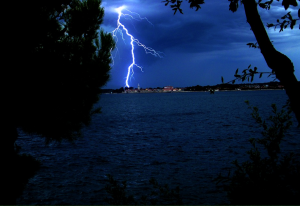By Kristin Jacques, author of Ragnarök Unwound, forthcoming from Sky Forest Press
The Valkyrie has made a comeback in a big way. While this Norse mythological figure has cropped up from time to time in the modern era, the influx and influence of mythology in recent media has lifted the Valkyrie in a new direction. There is now an abundance of depictions in comic books, novels, television shows and blockbuster films, where the Valkyrie has become synonymous with the B.A.M. (Bad Ass Motha), the tough-as-nails female heroine. This archetypal heroine is a cornerstone in several genres, such as Urban Fantasy.
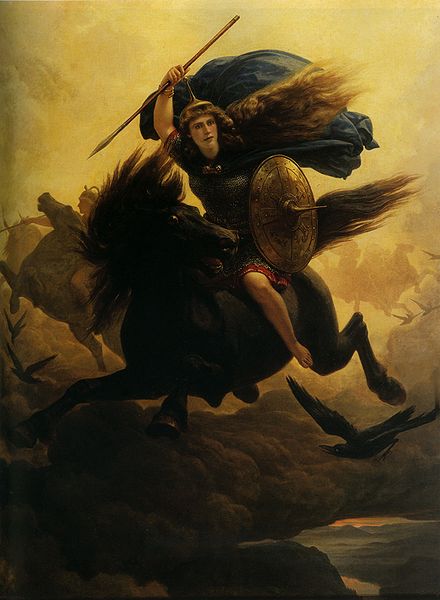
This representation is not a far cry from their Norse origins, though newer incarnations present a somewhat sanitized version of the original myth, focusing on the noble characteristics of these female extensions of the All Father. The hint of their dark origins is in the etymology of their name.
 To break down the old Norse Valkyrjur, Valr referred to the slain of the battlefield and kjósa, meant ‘to choose.’ Valkyrie translated to ‘Choosers of the Slain,’ a title that not only encompassed their choice of which warriors were granted Valhalla status, but who would die in battle. Valkyries didn’t shy away from invoking some heavy-duty black magics to ensure their choices came to fruition. In Njal’s Saga, there is an instance of twelve Valkyrie gathered around a loom, weaving fate like the Norns, though their materials are far grimmer. Here, the Valkyrie use intestines for thread, severed heads for weights, and swords and arrows for beaters, while they gleefully chant their hit list. The Saga of the Volsungs compares the sight of a Valkyrie to ‘staring into an open flame.’ To the Anglo-Saxons, they were spirits of carnage.
To break down the old Norse Valkyrjur, Valr referred to the slain of the battlefield and kjósa, meant ‘to choose.’ Valkyrie translated to ‘Choosers of the Slain,’ a title that not only encompassed their choice of which warriors were granted Valhalla status, but who would die in battle. Valkyries didn’t shy away from invoking some heavy-duty black magics to ensure their choices came to fruition. In Njal’s Saga, there is an instance of twelve Valkyrie gathered around a loom, weaving fate like the Norns, though their materials are far grimmer. Here, the Valkyrie use intestines for thread, severed heads for weights, and swords and arrows for beaters, while they gleefully chant their hit list. The Saga of the Volsungs compares the sight of a Valkyrie to ‘staring into an open flame.’ To the Anglo-Saxons, they were spirits of carnage.
At some point the representation shifted from ‘warrior’ to ‘shield maiden,’ and there, a fine distinction began to surface. Valkyrie served as projections, parts of a greater whole. The Valkyrie were an extension of Odin, but as the focus shifted to their nobler deeds, so too did their autonomy expand. Odin might dictate their choice of who died in battle, but the Valkyrie, such as Brunhild or Sigrun, chose their lovers. They chose mortals to favor and protect. They became susceptible to the vices and failings of mortals, just like other Norse deities. They became more human.

It was this association with fairness, brightness, gold, and bloodshed that has resurfaced in depictions of the modern Valkyrie. There has also been a bit of an amputation from the All Father. A single Valkyrie is a B.A.M., but she comes with a sisterhood. Recent Valkyrie representations include everything from Tessa Thompson’s very memorable kick-butt turn as Marvel’s Valkyrie in the third Thor outing to Rachel Skarsten’s Tamsin in the fantasy femme fatale brawl that is Lost Girl. [pictured: Tessa Thompson as Valkyrie in Marvel’s Thor: Ragnarok.]
In Marvel’s hot take, the Valkyrie were an elite band of female warriors who served in Odin’s army, with Thompson’s character adrift and rudderless without her sisters. (Slight spoiler: she comes back swinging.) Here at least Odin is present, but the Valkyrie, particularly Thompson, have complete autonomy over themselves.

The Valkyrie in the Canadian fantasy drama Lost Girl give a fair nod to their dark origins. Here, the Valkyrie don’t answer to Odin at all, but to Freyja. They still have the soul-taker gig, but with a twist. The Valkyrie consider one another sisters, and they fight like sisters, though the hair is off-limits.
For my own depiction of Valkyrie in Ragnarök Unwound, I draw on the more bombastic qualities present in the myths and modern incarnations in the creation of Hildr—fierce, loyal, and quite literal. Isolated from her sisters, Hildr builds a new sisterhood with the other female characters of the novel to fight the good fight.
A common factor in these modern depictions is while the Valkyrie are singularly B.A.M., the Sisterhood is a force of nature. They draw strength from one another and in turn give their strength to one another.
This mentality of sisterhood carries over into women’s culture. We all want to be Wonder Woman. We want to be the B.A.M., but we are strongest when we lift each other. We raise our sisters on our shields. No matter the depiction, the world they inhabit, or who their boss is, Valkyrie are the Sisterhood of the Fierce.
Sources:
The Saga of the Volsungs
The Viking Spirit by Daniel McCoy
Norse-mythology.org
Lost Girl
Thor: Ragnarok
Featured image: Arthur Rackham, “Wagner’s Ring Cycle: The Valkyrie,” 1910

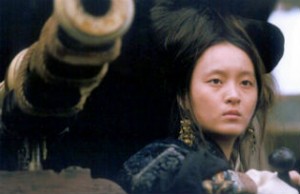

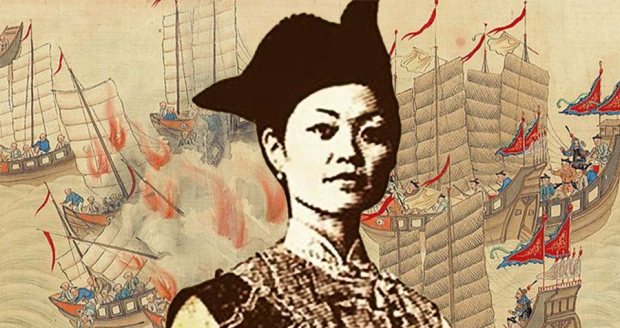

 The first volume opens in Gotham City in 1940 at a women’s professional baseball game, where the players are forced to wear masks to hide their identities to protect themselves from harassment. This isn’t an origin story. In this world, the Batwoman, AKA Kate Kane, has been active on the baseball field as well as in the streets fighting crime, even merging the two when a group of criminals attacks the crowd gathered at the stadium. When Amanda Waller offers her the chance to help end the war, Kate doesn’t hesitate because, as she says, “I want my life to have greater meaning”1 a meaning she can’t get on the home front. Whether that’s a character flaw or strength is left up to the reader.
The first volume opens in Gotham City in 1940 at a women’s professional baseball game, where the players are forced to wear masks to hide their identities to protect themselves from harassment. This isn’t an origin story. In this world, the Batwoman, AKA Kate Kane, has been active on the baseball field as well as in the streets fighting crime, even merging the two when a group of criminals attacks the crowd gathered at the stadium. When Amanda Waller offers her the chance to help end the war, Kate doesn’t hesitate because, as she says, “I want my life to have greater meaning”1 a meaning she can’t get on the home front. Whether that’s a character flaw or strength is left up to the reader. which identity is the true one? How does donning a costume and wearing a mask alter the original identity? In “What’s Behind the Mask? The Secret of Secret Identities,” Tom Morris discusses this dual nature, particularly in regards to Superman and Batman, and comes to the conclusion that “a duality has replaced a singularity, but with a new, fused unity.”3 In essence, a superhero character isn’t their secret identity at certain times and their heroic identity other times. They’re both simultaneously.
which identity is the true one? How does donning a costume and wearing a mask alter the original identity? In “What’s Behind the Mask? The Secret of Secret Identities,” Tom Morris discusses this dual nature, particularly in regards to Superman and Batman, and comes to the conclusion that “a duality has replaced a singularity, but with a new, fused unity.”3 In essence, a superhero character isn’t their secret identity at certain times and their heroic identity other times. They’re both simultaneously.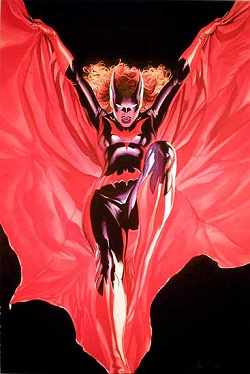 soldiers brought back from the dead. All the heroines we’ve been introduced to so far are here, so there’s a lot going on in this climactic scene. Among the chaos, though, the Batwoman says to Stargirl, “Symbols and stories got power, sugar. Fairy tales and propaganda. It’s all in the story you tell. It’s all in the story you sell. . . . Write your own ending.”5 This brief, powerful moment confirms that we don’t have to wait around for change to find us. We have the power to change our story, and through that, we transform ourselves.
soldiers brought back from the dead. All the heroines we’ve been introduced to so far are here, so there’s a lot going on in this climactic scene. Among the chaos, though, the Batwoman says to Stargirl, “Symbols and stories got power, sugar. Fairy tales and propaganda. It’s all in the story you tell. It’s all in the story you sell. . . . Write your own ending.”5 This brief, powerful moment confirms that we don’t have to wait around for change to find us. We have the power to change our story, and through that, we transform ourselves.
 The project, Rejected Princesses, present with endearing illustrations the stories of women and girls who have not been featured in the popular awareness. Created for children, the stories are accessible, fun and positive. The interest and introduction to reading and the knowledge, themes and ideas that they convey are vital to the education of children everywhere. Books can change the world.
The project, Rejected Princesses, present with endearing illustrations the stories of women and girls who have not been featured in the popular awareness. Created for children, the stories are accessible, fun and positive. The interest and introduction to reading and the knowledge, themes and ideas that they convey are vital to the education of children everywhere. Books can change the world.


 received such harsh reviews for The Awakening. Such negativity would have been enough to permanently discourage someone from trying to publish anything again, especially since that novel conveys such pure openness at the expense of risking reputation. But now the novel that was considered obscene and received scathing criticism is considered one of the most important works in literature, especially feminist literature.
received such harsh reviews for The Awakening. Such negativity would have been enough to permanently discourage someone from trying to publish anything again, especially since that novel conveys such pure openness at the expense of risking reputation. But now the novel that was considered obscene and received scathing criticism is considered one of the most important works in literature, especially feminist literature.